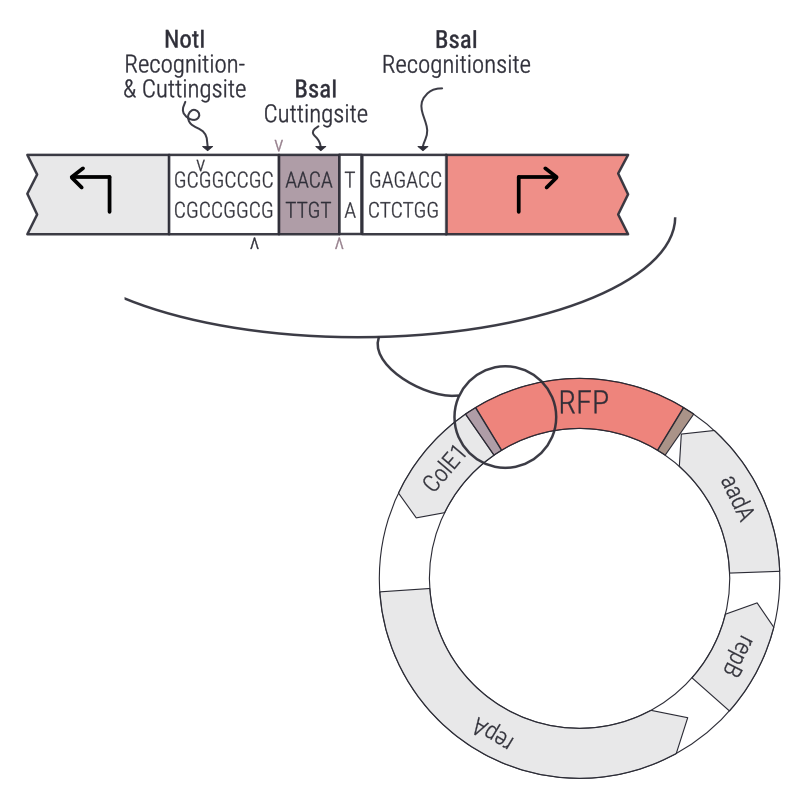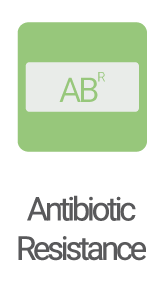pMC_0_5b_14_TetRes_short
Sequence and Features
- 10COMPATIBLE WITH RFC[10]
- 12COMPATIBLE WITH RFC[12]
- 21COMPATIBLE WITH RFC[21]
- 23COMPATIBLE WITH RFC[23]
- 25COMPATIBLE WITH RFC[25]
- 1000COMPATIBLE WITH RFC[1000]
Description
A version of the tetracycline resistance that only covers the position 5a-5(end) in the Marburg Collection syntax. This cassette can be used to insert an antibiotic resistance in between position 1-6 (the connector/homology parts of the Marburg Collection) when designing a construct for genome integration, when using it in conjunction with a terminator that only covers position 5a (BBa_K3228004 to BBa_K3228015 in the igem registry).
This part is contained in the Green Expansion, a range of parts from iGEM Marburg 2019that enables users of the Marburg Collection 2.0 to design MoClo compatible vectors for cyanobacteria as well as to engineer the genome of several cyanobacterial species.
The Green Expansion
The Green Expansion is an addition of parts to the Marburg Collection 2.0 (See: Design of the Marburg Collection) that features the world's first MoClo compatible shuttle vector for cyanobacteria. BBa_K3228069
The Green Expansion also offers all the parts needed for the genomic integration of one or multiple genes in cyanobacteria. This M.E.G.A. (Modularized Engineering of Genome Areas) kit convinces with a striking flexibility and a very intuitive workflow for the de novo assembly of your plasmid of choice. It encompasses five different neutral integration sites to choose from: three conventional sites frequently used in the cyanobacterial community (NSI to NSIII) as well as our own rationally designed artificial Neutral integration Site options a.N.S.o. 1 and 2 (See: Finding new artificial Neutral integration Site options).These sites show no transcriptional activity from neighboring regions according to RNA-seq data and are therefore completely orthogonal. Additionally we offer four different antibiotic markers to use (chloramphenicol, gentamicin, spectinomycin and kanamycin). With the Green Expansion up to 20 genes can be introduced into a cyanobacterial strain.
Thanks to the flexible design this expansion can also be used for the genomic modification of any chassis after the introduction of a new species specific LVL 0 integration sites to our Marburg Collection 2.0. As the workflow to build new homologies is a bit more intricate compared to the one pot on step assembly of our other parts due to the internal BsmBI cutting site, we described the workflow for that in our design section (See: Design of neutral integration sites).
The Green Expansion proves a valuable addition to our Marburg Collection 2.0 and to the iGEM Registry of Standard Biological Parts. It services users of our chassis and other cyanobacterial strains with a useful tool for genomic modifications but it also contributes a shell that can be used to modify any other model organism as well.
Compability
These parts are compatible with the RCF [1000] standard and can be used in any part collection that uses the PhytoBrick standard of overhangs. For more information we recommend to head over to Design of the Marburg Collection iGEM Marburg 2018.
Parts of the Green Expansion





